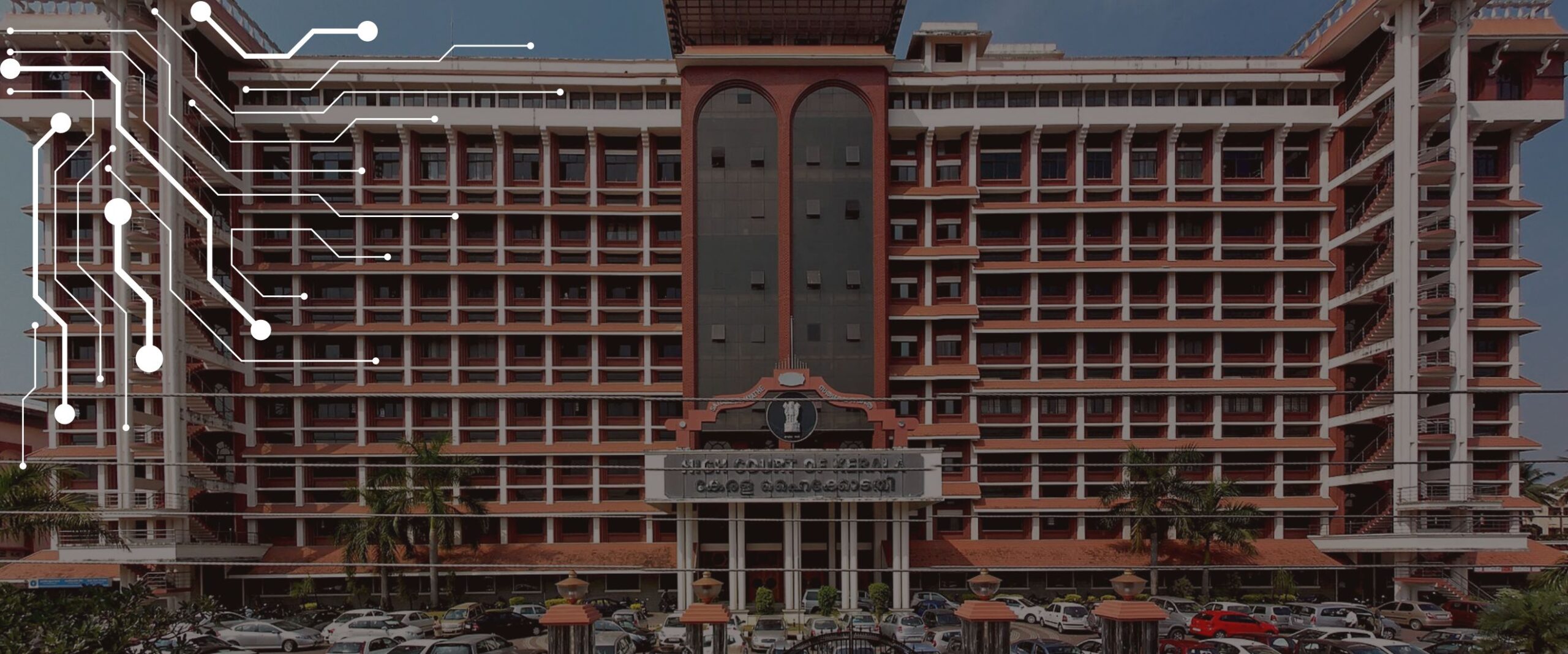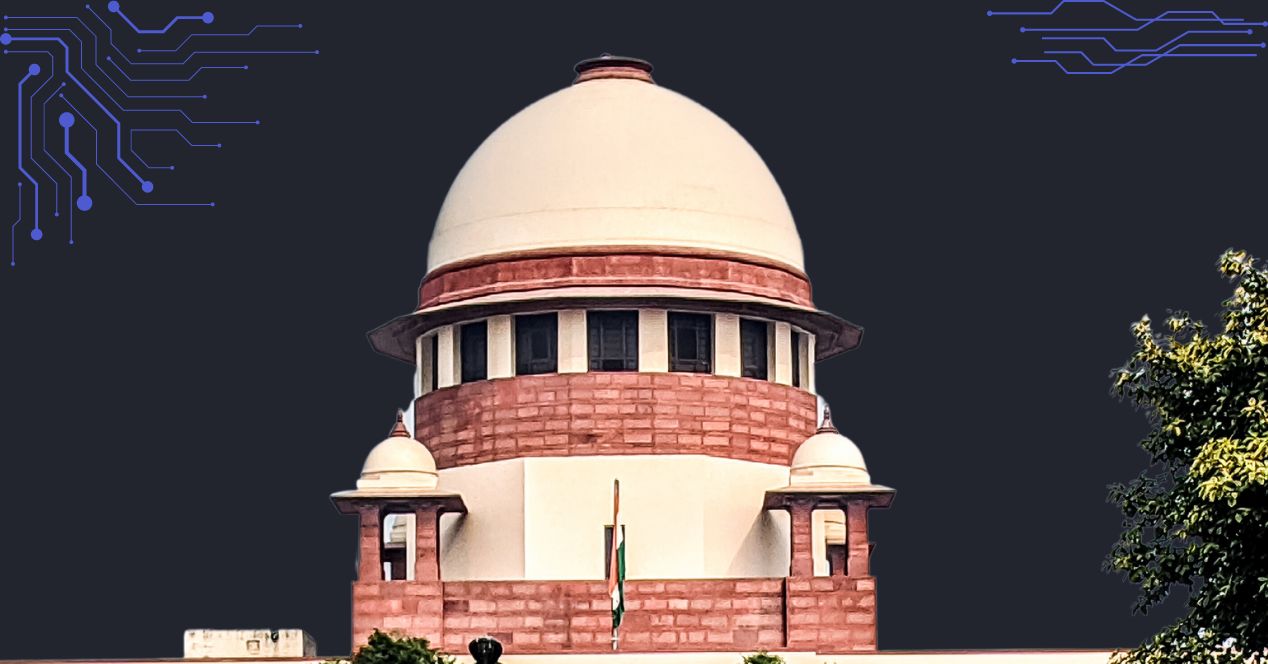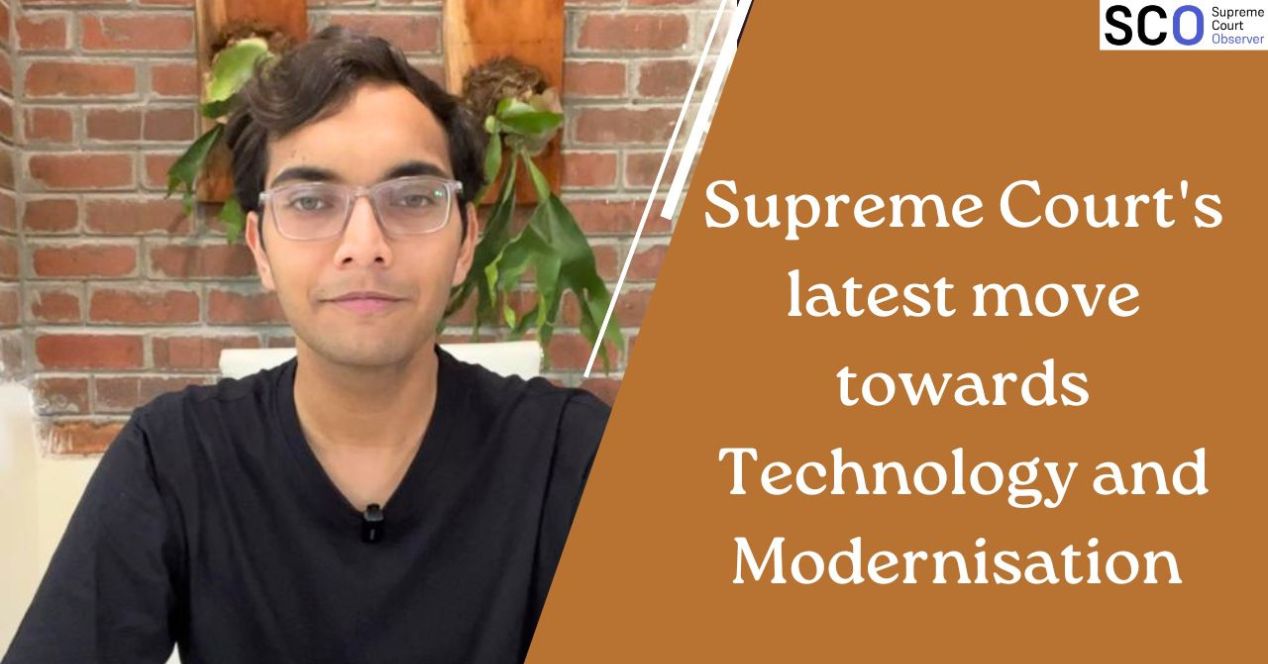Analysis
Marching in a single file
An in-house software has transformed the filing process in the Kerala High Court. But the path to adoption was paved with challenges

Last month, the Kerala High Court became the first Indian court to facilitate filing functions through a mobile application. It’s also the first court to introduce machine scrutiny of bail applications. Some courtrooms in the Kerala High Court have already gone “paperless.”
How did it get here? This is the story of the technological transformation of the filing process in the Kerala High Court. It stands out because it goes well beyond simply creating digital copies of physical documents. Instead, it put the institution on the path to becoming digitally native. This is not to paper over the fissures that such transitions inevitably cause. This account also details who gets left out in digital transformation, and the attempts that are being made to accommodate them. Let’s start at the beginning.
Understanding the rank and file
The Computer Committee of the Kerala High Court—comprised of five sitting judges—recognised the limitations of the data entry system. They wanted to make case management more efficient. In mid-2019, the Committee recruited an IT development team with a technical project manager, a system engineer, a technical lead and two software leads. In 2021, the Committee formed an IT Directorate with judicial officer Saleena V.G. Nair as director and Joseph Rajesh as deputy director.
Back then, the IT infrastructure in the Kerala High Court was poor. “When I joined the office, courtrooms had only one computer and old CRT monitor displays,” said one of the IT developers, who spoke to me on condition of anonymity. “The cabling work was not done properly and several floors were also facing internet connectivity issues.”
The IT Directorate began its overhaul by entrusting the Digital University of Kerala to conduct a functional requirement study for the complete automation of justice delivery.
A comprehensive report on the High Court’s tech transformation by the civil society organisation Daksh India details how the IT team mapped out the role of every stakeholder as cases flowed through the system. For the tech team, this involved not only understanding the non-negotiables like legally mandated procedural requirements but also softer aspects like hierarchies and informal networks. The team wanted to avoid the pitfalls of simply replicating physical-world processes in the digital space. “We tried to reengineer the process,” said a senior official in the IT Directorate, who spoke on condition of anonymity.
The team had come across some of these issues when they were working on a discrete project on bail applications in 2019. The Computer Committee wanted to create a digital module that would link up various players in the criminal justice administration system. The idea was for a government pleader and station house officer to be notified as soon as a bail application was filed. Also, they wanted to cut down the time lag between a judge passing a bail order and the actual release of the prisoner. In the system prevailing then, a bail order had to be physically delivered to the magistrate for the prisoner to be released.
The urgency of the work was exacerbated by the pandemic in March 2020. The virtual bail application system had not been deployed, so the Kerala High Court put together a makeshift system. For urgent filings in the early days of the lockdown, a lawyer would email the pleadings to the registry. A special team would check the pleadings and list the urgent cases. Lawyers would be notified of online hearings through WhatsApp.
Taking the tough call
This is around the time when the team had to take a difficult decision—moving away from the software recommended by the Supreme Court e-committee and developing its own Content Management System (CMS). It was felt that the Case Information System (CIS), developed by the National Informatics Centre, was not dynamic enough. For instance, it didn’t provide functionality for serving notice to other parties. Nor did it have a feature that allowed for the creation of role-based profiles for judges, prison authorities and advocates.
“For safety reasons, the CIS software has mainly two parts: core and periphery,” the IT developer explained, “A developer can only customise the periphery component of the CIS. To create the online bail module, we tried adding additional data fields, but it didn’t work out.” Additionally, the National Informatics Centre was based in Pune, and it was inconvenient to get real-time help if issues cropped up. This convinced the team that it would all have to be done in-house.
On 15 June 2020, the Kerala High Court introduced e-filing for bail applications through its own CMS. Then, in October, it introduced the feature that automatically sent digitally signed bail orders to counsel, the jail and the lower court.
Earlier, bail processing would take up to two weeks. Rajeevan B., an experienced criminal lawyer, took me through the stages of the laborious and time-consuming process under the physical system. “Once you filed the application, you needed to take three photocopies to the registry and a copy would be sent to the public prosecutor,” he said. The case would then be listed after passing scrutiny and being assigned a number. The hearing could only begin after the investigation officer submitted a physical copy of the case diary to the court. There was a fair amount of running around to do even after receiving an order. The advocate would take it to the magistrate, who would then sign it and have it sent to the prison officer.
The IT developer told me that the online model has cut down processing time to a maximum of three days. “Scrutinising, numbering, listing—it’s all automatic,” he explained, “The investigator uploads the diary to the prosecutor’s dashboard. After the hearing, the judge digitally signs the order and forwards it to the advocate, jurisdictional magistrate and prison officer.”
Rajeevan admitted that the process has speeded up, but even now, it takes at least eight days. “Most of the police stations and prisons don’t have strong internet connectivity,” he said, “Also, the process is not fully digital, it’s hybrid.” The High Court still asks for physical copies of pleadings, and some judges continue to prefer working with physical files.
Friction among stakeholders
Following on from the successful introduction of the bail module, the Kerala High Court introduced e-filing in all categories of cases on 17 May 2021. Then, following the direction of the Supreme Court e-committee, the High Court made it mandatory to e-file all cases—along with physical filing—from 1 January 2022.
To speed up e-filing, the IT team introduced a CMS workflow that broke down the steps into four: filling metadata, uploading case documents, e-payment and OTP verification. For scrutiny of a filing, the CMS assigns the file to a filing scrutiny officer (FSO). The FSO accesses the file from their dashboard and can digitally mark defects. The fact that the dashboards can be accessed from anywhere facilitated work-from-home capability for the FSOs.
The dashboard of an FSO can also be monitored by the IT Directorate, the IT development team members and the Assistant Registrar. “As promotions are mainly based on performance, the dashboard can be used as reviewing material,” the IT developer said.
However, some clerks I spoke to complained that there are a few FSOs who can be seen online but won’t respond to messages or phone calls. “There are chances that they might be chilling out or doing some household work,” said Kunjikrishnan, a clerk working at the High Court. It was easier to approach them at their seat in the office to convince them to move things along, Kunjikrishnan said. When I spoke to an FSO, they told me on condition of anonymity that advocates and clerks repeatedly call them for case updates, even at odd hours and outside their shift timings.
The advocates, in turn, were unhappy about their files being scrutinised by different FSOs—the first time by the FSO on duty at the time of claim submission, and the second time when the claim was resubmitted after curing defects. The IT team member told me they solved this by updating the allocation algorithm to ensure that the file goes to the same FSO. Another challenge was judges having different sets of defect parameters. To solve this, the Computer Committee compiled a comprehensive list of defects along with the FSOs to reduce the scope for discretion.
Bridging the digital divide
Both members of the IT team I spoke with said that there was considerable opposition from many stakeholders during the initial period of e-filing. “It is quite natural,” the developer said, “It takes time for people to adapt to new changes. Most of these were genuine concerns coming from senior staff who were not tech-savvy. Several senior judges also complained about it.”
The Computer Committee took the criticism positively. They organised training in collaboration with the advocates’ and clerks’ associations. Since the IT team’s office is on the fifth floor of the High Court, people could approach them directly to clarify doubts. The IT Directorate also started a WhatsApp group for advocates, clerks, judges, section officers and scrutiny officers.
On the first Thursday of every month, the Computer Committee conducts a meeting with the Kerala High Court Advocate Association. “They share their feedback, complaints and suggestions and we try our best to act upon it,” the senior official of the IT Directorate said, “Apart from this, we trial new features with a few tech-savvy advocates.”
To further bridge the digital divide, the Kerala High Court also opened an e-filing service centre for litigants and advocates who need assistance or who don’t have access to a computer. The centre is on the ground floor in the courtyard of the High Court, and there are paralegals to assist with the filing.
Changing dynamics
Gangadharan, an advocate, told me that a visit to this e-Sewa Kendra is not as seamless as it may appear. I met him at the centre when he was waiting for his turn to clear defects in one of his clients’ applications. He was convinced that manual filing was more straightforward. “After filing, you just needed to take two copies and submit it to the section,” he said, “The officer would prepare a physical docket, number it and forward the file for scrutiny. Following the scrutiny, the defect would be cleared and the case would be listed. But if there is a defect in e-filing, the case needs to be refiled again.” Gangadharan also said that volunteers can be careless during filing, and it was difficult for people like him to spot mistakes on a computer screen.
But Adarsh S., a young advocate I spoke to, had a different view. “Earlier, I’d have to carry bundles of case files but now everything is here,” he said, firing up the beta version of the Kerala High Court app on his tablet.
Adarsh, an executive committee member of the High Court’s Advocates Association, shared that the e-filing process is helping many young advocates to go independent sooner. Generally, seniors can be reluctant to share case information with juniors, out of a feeling of guarding their turf and an expectation that juniors have to earn their stripes.
“Many juniors were being made to do clerical work,” Adarsh said. Since e-filing has been introduced, seniors have become more reliant on juniors for filing. “And this gives them an opportunity to study the case files and get good exposure. Recently, many freshers have started practising independently or setting up an office jointly with a partner.”
There are other ways in which digitisation is challenging the hierarchy and redefining roles. “Earlier, there was an unequal distribution of labour,” the senior official of the IT Directorate shared, “When an FSO was assigned five case files, the person sitting next to them would have to check 10. Now, the software ensures that work is assigned in a more equal manner.”
It’s also changed the power dynamics between clerks and FSOs. “Clerks had to bow down and boost the ego of the FSOs,” the IT Directorate official said, “They had to make multiple visits to get their work done. But now they can monitor details on the dashboard: how much work they’ve completed in how much time. From the lowest level of the court hierarchy, the clerk’s role has been elevated to that of a manager.”
Concerns of the clerk community
Yet, the clerk community is the one most wary of the digitisation process. There is a fear that it will affect the livelihood of more than 70 percent of them. Radhakrishnan, an executive committee member of the Kerala Advocate Clerks’ Association, told me that there are currently at least 345 clerks registered with the Kerala High Court. Around 160 clerks are not registered with the association.
In the physical court system, filing is where a clerk could add most value, based on the relationships they developed with court officers, especially in the scrutiny department. Their tasks included urgent submissions, requesting and receiving certified copies, submission of adjournment requests, listing and filing. Many of these jobs have been automated under the CMS.
When e-filing started in 2020, clerks didn’t have access to a dashboard. “But then we met the Computer Committee and demanded a dashboard,” said Radhakrishnan. The Computer Committee accepted the demand and clerks can now submit pleadings after entering the OTP provided to the advocate.
“As an inclusive gesture, the Computer Committee provided computers and training,” said Sandeep, a clerk, “But it’s really difficult to learn the skill as most of us are old. A few among us who learnt how to use the computer became Desktop Publishing operators.”
When many courtrooms announced their intention to turn paperless, the clerks demanded that the Computer Committee reconsider the decision. “Following our demand, the Computer Committee recommended that the High Court make it mandatory to submit physical copies of the pleadings after the e-filing process,” said Radhakrishnan, “The Committee further promised jobs for a few of us in the digitisation department.”
However, from July 2023, the High Court directed courts across the state to make e-filing mandatory in all cases except those filed in the sessions court. In protest, the Kerala Advocate Clerks’ Association staged a hunger strike near the High Court building during Onam in 2023. Their demands included: withdrawal of the condition that e-filing of handwritten copies of pleadings is not allowed; establishing a sufficient number of e-Sewa centres in court complexes; retaining physical filing with e-filing; excluding applications for certified copies and Batta memo from e-filing.
Old before pending: the digitisation challenge
In the digitisation department, where the Committee has promised jobs to clerks, the going has been slow and somewhat arduous.
The digitisation task is gargantuan, and at this point, it’s focussed on disposed cases rather than pending ones. In accordance with the Supreme Court’s e-court Committee objectives, the Kerala High Court started digitisation of disposed case records in 2021. The court aims to digitise approximately 14 crore pages as part of this project.
The fragility of old case files and the absence of metadata were the main challenges faced by the team. Fonts and texts were not clear in many files and there were folding marks. In many old case files, the team added additional metadata entries including the name of the police station, case type and register number.
The Daksh report highlights the fact that the High Court still continues to work with physical files in older pending cases. The sections in the High Court building that handle the older cases are stacked with dusty files, and continue to “look like they did before the introduction of CMS.” These older pending cases “are in limbo between the old and new systems, even in paperless courts.”
“Although the project got approval from the Kerala Home Ministry in 2018, due to the Covid outbreak and other obstacles, it took us three years to kickstart it,” said a staff member in the digitisation section, who did not want to be named. Newgen Software, a Delhi-based company, got the tender to work on the digitisation project. The staff member told me that the company has digitised around 3.25 crore pages so far.
The IT team is also trying to ensure that anything to do with the disposed matters can now take place digitally—for instance, if an Interlocutory Application needs to be filed. One of their goals is to integrate the digitised files into the copy application module of the CMS. “Currently, even if a certified copy is applied for online, the certificate is issued physically,” the staff member said. Once integrated, the certified copy can be issued digitally, which is something that the clerks have been resisting since it cuts into their livelihood.
***
Meanwhile, the High Court remains committed to its transformation agenda while balancing competing priorities of different stakeholders. According to the statistics shared by the IT Directorate, the High Court has allocated approximately Rs 30.2 crore towards the e-court project between FY20 and FY22. (The state government has allocated Rs 7.3 crore over FY22 and FY23. The Supreme Court allocated Rs 37.6 crore under Phase II of the e-court project, between August 2015 and March 2023.)
Along with releasing a mobile app for the CMS in November 2023, the High Court also announced six other mobile applications and seven e-initiatives. One of the apps will be exclusively for judges to manage their cases.
Now, the IT team has set its sight on a more ambitious target: replacing the machine-based algorithm with Artificial Intelligence. The developer told me that they are hoping that AI-powered tools can be extended “to automate 90 percent of the court’s procedures.”
With the senior official of the IT Directorate, I joked about the technology being used to decide cases. “Never,” he replied, “A judge requires empathy, intuition, and a deep understanding of societal nuances and privileges. An AI tool can be easily manipulated if you use language in an attractive way. But a judgement is made in the present, not in the past.”
Ashfaque EJ is an independent journalist.
Correction: An earlier version of this article suggested that the Kerala High Court set up the IT Directorate in 2018. The Directorate was, in fact, established in 2021.




